Vittoriano - Altare della Patria:Rome
Aug 22, 2019 09:49:00 #
Wikipedia:
The Vittorio Emanuele II Monument (Italian: "Monumento Nazionale a Vittorio Emanuele II"), also known as the (Mole del) Vittoriano, Il Vittoriano, or Altare della Patria (English: "Altar of the Fatherland"), is a monument built in honor of Victor Emmanuel II, the first king of a unified Italy, located in Rome, Italy.[1] It occupies a site between the Piazza Venezia and the Capitoline Hill. It's currently managed by the Polo Museale del Lazio, the Italian Ministry of Defense and the Museo Centrale del Risorgimento Italiano (Museo centrale del Risorgimento al Vittoriano).
The eclectic structure was designed by Giuseppe Sacconi in 1885. Established Italian sculptors, such as Leonardo Bistolfi and Angelo Zanelli, made its sculptures nationwide. [2] It was inaugurated on June 4th, 1911 and completed in 1935.[3]
Its design is a neoclassical interpretation of the Roman Forum. It features stairways, Corinthian columns, fountains, an equestrian sculpture of Victor Emmanuel II, and two statues of the goddess Victoria riding on quadrigas. The base houses the museum of Italian Unification[4][5] and in 2007 a panoramic lift was added to the structure, allowing visitors to ride up to the roof for 360-degree views of Rome.[6] The structure is 135 m (443 ft) wide and 70 m (230 ft) high. If the quadrigae and winged victories are included, the height reaches 81 m (266 ft).[4] It has a total area of 17,550 square metres.[7]
The monument holds great national significance. It is an architectonic and artistic tribute to the Italian Risorgimento: the complex process of unification undertaken by Victor Emmanuel II throughout the second half of the 19th Century. It is regarded as a national symbol of Italy and every year it hosts important national celebrations.[1] The largest annual celebrations are Liberation Day (April 25th), Republic Day (Italian: "Festa della Repubblica Italiana") (June 2nd), and Armed Forces Day (Italian: "Giornata dell'Unità Nazionale e delle Forze Armate") (November 4th). During these celebrations, the Italian President and the highest government officials pay tribute to the Unknown Soldier and those who died in the line of duty by laying a laurel wreath.[7]
Brief History of the Monument:
Following the death of Victor Emmanuel II in 1878, the Italian government approved the construction of a monumental complex on the Northern side of Rome’s Capitol Hill. The monument would celebrate the legacy of the first king of Italy and would become a symbol of national patriotism. Construction began in 1885, under the lead of Italian architect Giuseppe Sacconi, and required the demolition of numerous buildings in the proximity of the selected location.[1]
The partly completed monument was inaugurated on June 4th, 1911 on the occasion of the Turin International world’s fair and the 50th anniversary of Italian Unification. Construction continued throughout the first half of the 20th Century; in 1921 the body of the Unknown Soldier was placed in the crypt under the statue of goddess Roma and in 1935 the monument was fully completed amidst the inauguration of the Museo Centrale del Risorgimento Italiano (Museo Centrale del Risorgimento al Vittoriano).[4]
With the rise of Fascism in 1922, the Vittoriano became the setting for the military parades of the authoritarian regime guided by Benito Mussolini. After World War II, with the institution of the Italian Republic in 1946, the monument was stripped of all its Fascist symbolisms and reassumed its original function as a secular temple dedicated to the Italian nation and its people.[7] Throughout the second half of the 20th Century, however, its significance as a symbol of national identity started declining as the public opinion started perceiving it as a cumbersome relic representing a nation superseded by its own history.[1] At the turn of the 21st Century, Italy’s President Carlo Azeglio Ciampi pushed for a revaluation of Italian patriotic symbols, including the Vittoriano. To this day the monument hosts major national parades and celebrations such as Liberation Day (April 25th), Republic Day (Italian: "Festa della Repubblica Italiana") (June 2nd), and Armed Forces Day(Italian: "Giornata dell'Unità Nazionale e delle Forze Armate") (November 4th).
Unknown soldier
The monument holds the Tomb of the Unknown Soldier with an eternal flame, built under the statue of goddess Roma after World War I following an idea of General Giulio Douhet. The body of the unknown soldier was chosen on 26 October 1921 from among 11 unknown remains by Maria Bergamas, a woman from Gradisca d'Isonzo whose only child was killed during World War I. Her son's body was never recovered. The selected unknown was transferred from Aquileia, where the ceremony with Bergamas had taken place, to Rome and buried in a state funeral on 4 November 1921.
Military colours
The flags of disbanded units of the Italian Armed Forces, as well as the flags of ships stricken from the naval register of the Italian Navy are stored at the Vittoriano in the so-called Shrine of the Flags (Sacrario delle Bandiere). The oldest flag on display is the flag of the 19th-century frigate Giuseppe Garibaldi. When an Italian military unit is reactivated its flag is taken from the Vittoriano and returned to the unit, which with the flag receives also the name, traditions, and military honors bestowed upon the flag over time.
Controversy
The monument, the largest in Rome, was controversial since its construction destroyed a large area of the Capitoline Hill with a Medieval neighbourhood for its sake.[8] The monument itself is often regarded as conspicuous,[8] pompous and too large.
It has been described as being "chopped with terrible brutality into the immensely complicated fabric of the hill".
It is clearly visible to most of the city of Rome despite being boxy in general shape and lacking a dome or a tower.[4] The monument is also glaringly white, built from "corpse-white marble" imported from Botticino in Brescia, making it highly conspicuous amidst the generally brownish buildings surrounding it. For its shape and conspicuous nature, Romans have given it a number of humorous and somewhat uncomplimentary nicknames, including la torta nuziale ("the wedding cake"), la dentiera ("the dentures"), macchina da scrivere ("the typewriter") and la zuppa inglese ("English soup" dessert, which refers to a trifle).
Hi,
This is a huge white building right next to Capitoline Museum and Roman Forum you can not miss it when you are in Rome.
There are so much details and history around the building and there is a beautiful gallery inside the building as well. You can walk from here to the Colleseo within 15 minutes.
Hope you enjoy.
The Vittorio Emanuele II Monument (Italian: "Monumento Nazionale a Vittorio Emanuele II"), also known as the (Mole del) Vittoriano, Il Vittoriano, or Altare della Patria (English: "Altar of the Fatherland"), is a monument built in honor of Victor Emmanuel II, the first king of a unified Italy, located in Rome, Italy.[1] It occupies a site between the Piazza Venezia and the Capitoline Hill. It's currently managed by the Polo Museale del Lazio, the Italian Ministry of Defense and the Museo Centrale del Risorgimento Italiano (Museo centrale del Risorgimento al Vittoriano).
The eclectic structure was designed by Giuseppe Sacconi in 1885. Established Italian sculptors, such as Leonardo Bistolfi and Angelo Zanelli, made its sculptures nationwide. [2] It was inaugurated on June 4th, 1911 and completed in 1935.[3]
Its design is a neoclassical interpretation of the Roman Forum. It features stairways, Corinthian columns, fountains, an equestrian sculpture of Victor Emmanuel II, and two statues of the goddess Victoria riding on quadrigas. The base houses the museum of Italian Unification[4][5] and in 2007 a panoramic lift was added to the structure, allowing visitors to ride up to the roof for 360-degree views of Rome.[6] The structure is 135 m (443 ft) wide and 70 m (230 ft) high. If the quadrigae and winged victories are included, the height reaches 81 m (266 ft).[4] It has a total area of 17,550 square metres.[7]
The monument holds great national significance. It is an architectonic and artistic tribute to the Italian Risorgimento: the complex process of unification undertaken by Victor Emmanuel II throughout the second half of the 19th Century. It is regarded as a national symbol of Italy and every year it hosts important national celebrations.[1] The largest annual celebrations are Liberation Day (April 25th), Republic Day (Italian: "Festa della Repubblica Italiana") (June 2nd), and Armed Forces Day (Italian: "Giornata dell'Unità Nazionale e delle Forze Armate") (November 4th). During these celebrations, the Italian President and the highest government officials pay tribute to the Unknown Soldier and those who died in the line of duty by laying a laurel wreath.[7]
Brief History of the Monument:
Following the death of Victor Emmanuel II in 1878, the Italian government approved the construction of a monumental complex on the Northern side of Rome’s Capitol Hill. The monument would celebrate the legacy of the first king of Italy and would become a symbol of national patriotism. Construction began in 1885, under the lead of Italian architect Giuseppe Sacconi, and required the demolition of numerous buildings in the proximity of the selected location.[1]
The partly completed monument was inaugurated on June 4th, 1911 on the occasion of the Turin International world’s fair and the 50th anniversary of Italian Unification. Construction continued throughout the first half of the 20th Century; in 1921 the body of the Unknown Soldier was placed in the crypt under the statue of goddess Roma and in 1935 the monument was fully completed amidst the inauguration of the Museo Centrale del Risorgimento Italiano (Museo Centrale del Risorgimento al Vittoriano).[4]
With the rise of Fascism in 1922, the Vittoriano became the setting for the military parades of the authoritarian regime guided by Benito Mussolini. After World War II, with the institution of the Italian Republic in 1946, the monument was stripped of all its Fascist symbolisms and reassumed its original function as a secular temple dedicated to the Italian nation and its people.[7] Throughout the second half of the 20th Century, however, its significance as a symbol of national identity started declining as the public opinion started perceiving it as a cumbersome relic representing a nation superseded by its own history.[1] At the turn of the 21st Century, Italy’s President Carlo Azeglio Ciampi pushed for a revaluation of Italian patriotic symbols, including the Vittoriano. To this day the monument hosts major national parades and celebrations such as Liberation Day (April 25th), Republic Day (Italian: "Festa della Repubblica Italiana") (June 2nd), and Armed Forces Day(Italian: "Giornata dell'Unità Nazionale e delle Forze Armate") (November 4th).
Unknown soldier
The monument holds the Tomb of the Unknown Soldier with an eternal flame, built under the statue of goddess Roma after World War I following an idea of General Giulio Douhet. The body of the unknown soldier was chosen on 26 October 1921 from among 11 unknown remains by Maria Bergamas, a woman from Gradisca d'Isonzo whose only child was killed during World War I. Her son's body was never recovered. The selected unknown was transferred from Aquileia, where the ceremony with Bergamas had taken place, to Rome and buried in a state funeral on 4 November 1921.
Military colours
The flags of disbanded units of the Italian Armed Forces, as well as the flags of ships stricken from the naval register of the Italian Navy are stored at the Vittoriano in the so-called Shrine of the Flags (Sacrario delle Bandiere). The oldest flag on display is the flag of the 19th-century frigate Giuseppe Garibaldi. When an Italian military unit is reactivated its flag is taken from the Vittoriano and returned to the unit, which with the flag receives also the name, traditions, and military honors bestowed upon the flag over time.
Controversy
The monument, the largest in Rome, was controversial since its construction destroyed a large area of the Capitoline Hill with a Medieval neighbourhood for its sake.[8] The monument itself is often regarded as conspicuous,[8] pompous and too large.
It has been described as being "chopped with terrible brutality into the immensely complicated fabric of the hill".
It is clearly visible to most of the city of Rome despite being boxy in general shape and lacking a dome or a tower.[4] The monument is also glaringly white, built from "corpse-white marble" imported from Botticino in Brescia, making it highly conspicuous amidst the generally brownish buildings surrounding it. For its shape and conspicuous nature, Romans have given it a number of humorous and somewhat uncomplimentary nicknames, including la torta nuziale ("the wedding cake"), la dentiera ("the dentures"), macchina da scrivere ("the typewriter") and la zuppa inglese ("English soup" dessert, which refers to a trifle).
Hi,
This is a huge white building right next to Capitoline Museum and Roman Forum you can not miss it when you are in Rome.
There are so much details and history around the building and there is a beautiful gallery inside the building as well. You can walk from here to the Colleseo within 15 minutes.
Hope you enjoy.
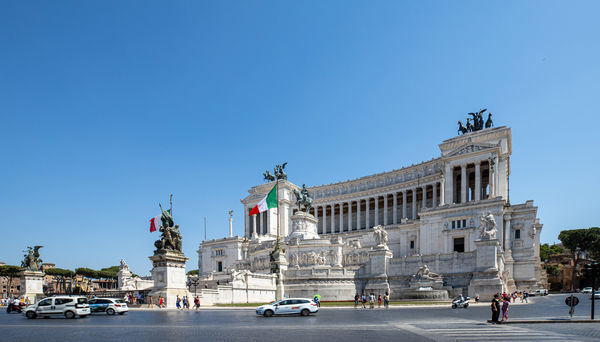
(Download)
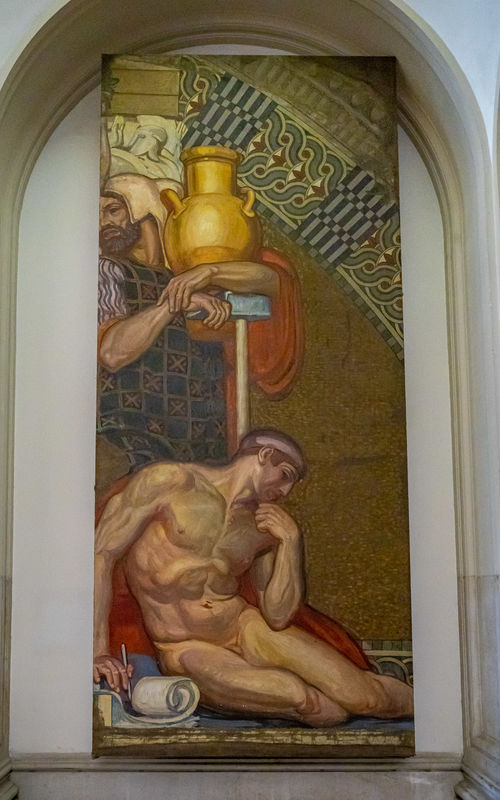
(Download)
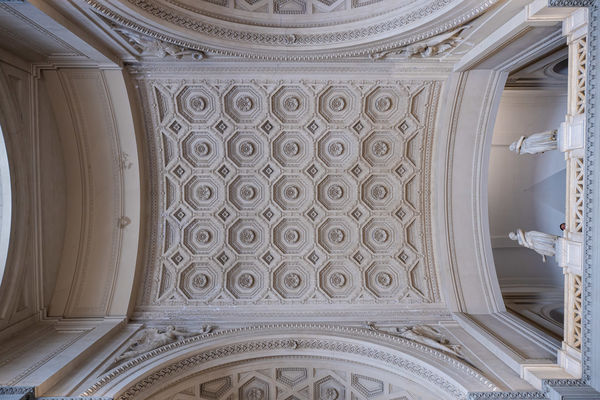
(Download)
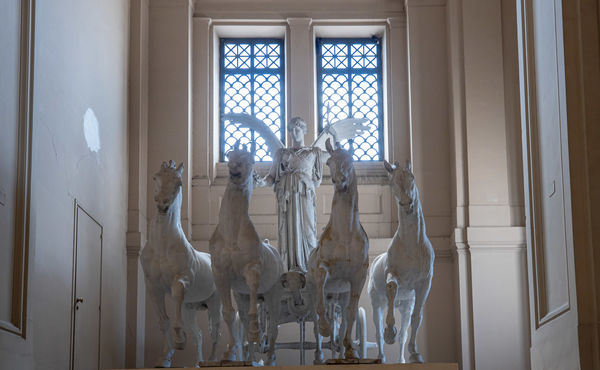
(Download)
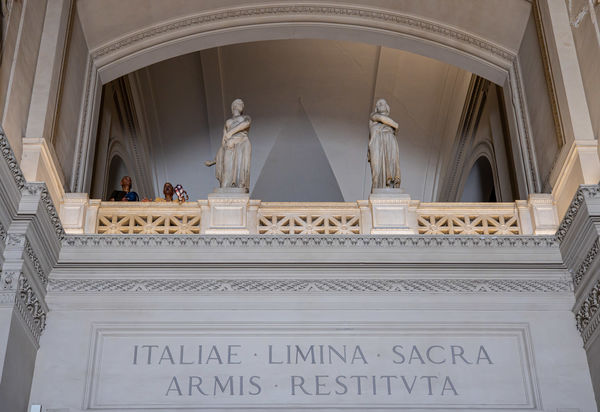
(Download)
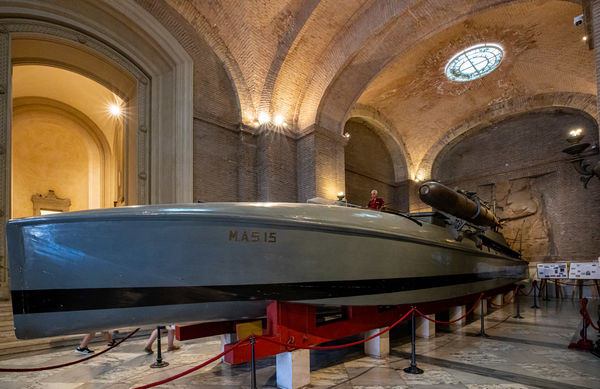
(Download)
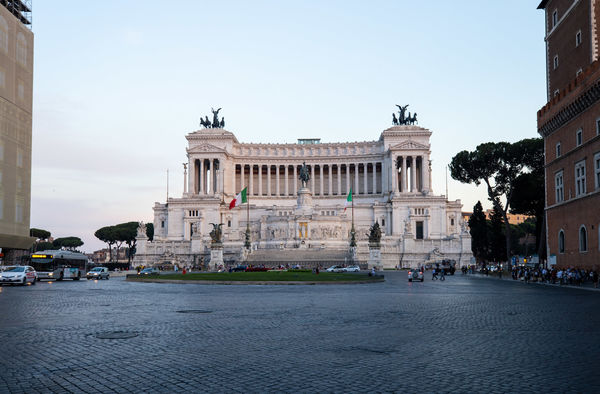
(Download)
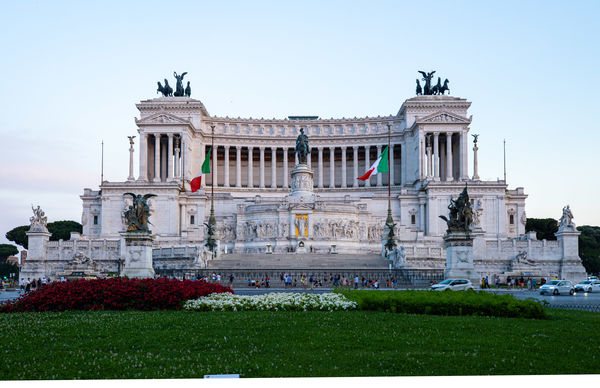
(Download)
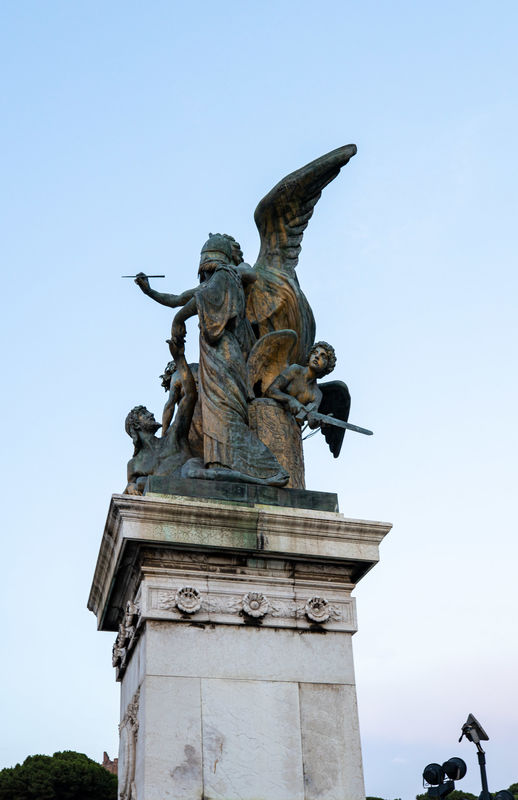
(Download)
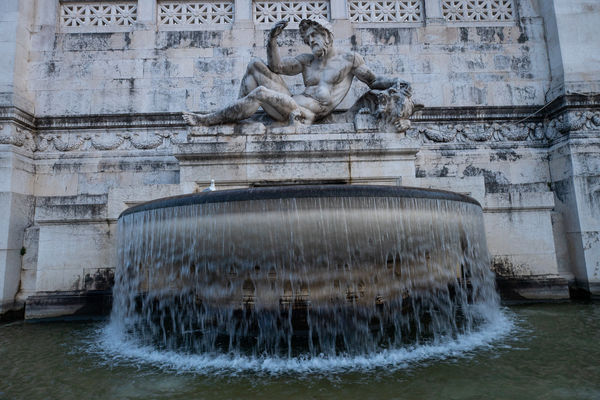
(Download)
Aug 22, 2019 09:54:51 #
Saigon wrote:
Wikipedia: br br The Vittorio Emanuele II Monumen... (show quote)
Thank you for the write-ups and excellent information to go with excellent images.
Stan
Aug 22, 2019 10:07:53 #
Aug 22, 2019 10:17:29 #
last week on kpbs ?? , there was a show about Mussolini the builder . before WW2 , he built a amazing numbers of large buildings and highways .that was his way to employ the people during the depression .never seen or heard of that before that show .
Aug 22, 2019 10:20:59 #
Aug 22, 2019 10:27:17 #
PixelStan77 wrote:
Thank you for the write-ups and excellent information to go with excellent images.
Stan
Stan
Thanks so much PixelStan77!
Aug 22, 2019 10:28:38 #
timcc wrote:
Great shots -- and I always enjoy your history background narratives!
Thanks timcc....
Aug 22, 2019 10:33:03 #
agillot wrote:
last week on kpbs ?? , there was a show about Mussolini the builder . before WW2 , he built a amazing numbers of large buildings and highways .that was his way to employ the people during the depression .never seen or heard of that before that show .
Yes,
Tons of history in Rome agillot! Amazing that GDP in Italy has been around 0% (flat) in the last 10 years with no end in sight.
Thanks
Aug 22, 2019 10:33:30 #
Bob Mevis wrote:
Thanks for the narrative and for posting this fine set.
Thanks Bob Mevis! Appreciated....
Aug 22, 2019 10:36:11 #
Saigon wrote:
Wikipedia: br br The Vittorio Emanuele II Monumen... (show quote)
The interesting amount of information is astounding. Your captures of the spectacular monuments is remarkable. Thank you for sharing your knowledge and photography expertise.






Aug 23, 2019 07:17:29 #
Aug 23, 2019 07:37:13 #
Saigon wrote:
Wikipedia: br br The Vittorio Emanuele II Monumen... (show quote)
Excellent set and history of a beautiful monument Saigon.
Aug 23, 2019 08:39:13 #
Aug 23, 2019 08:43:05 #
Annie-Get-Your-Gun wrote:
The interesting amount of information is astoundin... (show quote)
Thanks Annie-Get-Your-Gun!
Aug 23, 2019 08:43:34 #
If you want to reply, then register here. Registration is free and your account is created instantly, so you can post right away.






